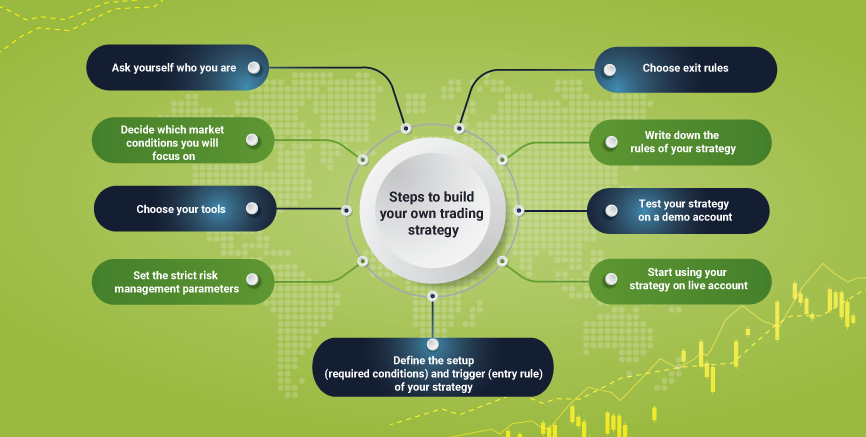Trading Accounts
Trading Conditions
Financials
CFD Trading instruments

Don’t waste your time – keep track of how NFP affects the US dollar!
The ASIC policy prohibits us from providing services to clients in your region. Are you already registered with FBS and want to continue working in your Personal area?
Personal areaInformation is not investment advice
Many people believe that markets are random, so they prefer to trade on a hunch entirely relying on their gut feelings. Sometimes it is really possible to scoop a big profit in a single trade inspired by nothing but your intuition. However, this kind of success is a matter of pure chance. There’s no guarantee that you will be able to repeat it.
Experienced traders rely on the thoroughly elaborated trading strategies. They know that although there might be some deviations in the exchange rates, they do follow certain patterns. As a result, it’s necessary to have a strategic approach to trading. That’s why we encourage you to build your own trading strategy.
Trading tip: You may find various Forex trading strategies on the Internet. Before using any of them on the live account, test in on the demo account. Have realistic expectations – some trading strategies are better than others, but none will offer you 100% profit.
So, despite the fact that there are hundreds of existing strategies to use, you can try to build your own one. Its undeniable advantage will be that it will take into account your personal approach to Forex trading.
You don’t have to have a multiyear trading experience to create your own strategy. However, you should know such basic things as:

1. Ask yourself who you are: scalper, day trader, medium-term trader or long-term trader and choose a timeframe – M30, hourly, daily, weekly, monthly, etc.
2. Decide which market conditions you will focus on. As you know, there three primary conditions: trend, range, and breakout. Each of these conditions exhibits its own market tone. As a result, a strategy that is good for trend trading can show the weak result when the market is in a range.
3. Choose your tools: will you use technical indicators and, if so, which ones? There are two types of strategies: indicator and no-indicator. If you prefer an indicator strategy, various technical indicators available in Metatrader will help you to identify a market’s movement. No-indicator strategies can include the analysis of candlestick patterns, chart patterns, trendlines and other elements of price action, as well as news trading.
4. Define the setup (required conditions) and trigger (entry rule) of your strategy.
The setup is a favorable market condition, significant but not sufficient for opening the trade. It may refer to a particular location of candlesticks or indicators that you apply to a technical chart.
The setup shows a favorable time for trading, but it does not point at the exact moment when you should enter it. The setup may consist of one or more filters. Filters are designed to protect traders from receiving false trading signals. However, if you apply too many filters, you risk entirely missing trading signals, so a balance between a small and a large number of filters is necessary.
The second important element is a trigger. As opposed to the setup, it is a technical signal that indicates the right moment for entering the market. It is quite important to know your particular trigger to enter the market without any hesitation. It can be candlesticks, bar patterns, indicators, and oscillators.
5. Set the strict risk management parameters: risk/reward ratio, position size. The common ratio between potential loss and profit is 1:3. The basic rule of trading is like this: risk no more than 1-2% of deposit for 1 trade.
6. Choose exit rules – make a rule for Take Profit and Stop Loss orders.
Not only there is an entry trigger, but an exit trigger as well. It is a moment when you understand that it is time to close your trade. The exit trigger is useful not only when you fail, but even if you have a profitable trade because a market will not be by your side forever.
7. Write down the rules of your strategy. Even if you are sure that you remember all steps of your strategy, it is important to write them down to not hesitate when it is time to trade.
8. Test your strategy on a demo account. Make a good effort: this will create a base for your success. If there are mistakes, you will be able to correct them without losing money.
9. Start using your strategy on live account: don’t digress from your rules but keep learning and thinking about how to make your strategy even better.